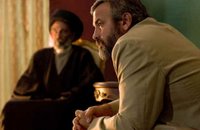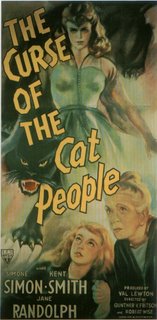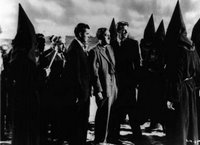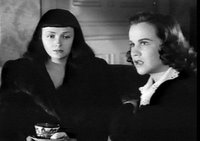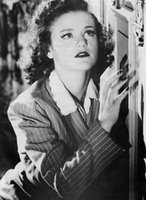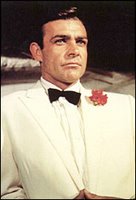
Oh, to have a time machine, and travel back to 1962 to see the premiere of the first Bond film, Dr. No, starring a relatively unknown Scottish ex-truck driver, Sean Connery. I’ve seen Dr. No on the big screen at a repertory theatre, but I doubt that it captured the magic. But there again, with my jaded modern filmgoer eyes, it would be impossible to know the excitement of audiences as they realized they were seeing a new type of hero in a new type of screen adventure.
Bond has now been on the screen for over 40 years, the character has become a cultural icon, and the films have long become formula. But what a glorious formula it is, and what incarnations the character has survived—rogue, clown, killer, superman (not to mention Scottish, Australian, English, Welsh, and Irish).
I’m a Bond fan. I’ve seen every movie at least three times, read all the books. My first movie theatre experience with a Bond film was unfortunate—1979’s Roger Moore opus Moonraker, surely the worst of the series. But I survived that, and went on to look forward to the release of each new Bond picture. Here are my reflections, thoughts, and opinions on the Bond film series, starting with a brief homage to the creator of 007.
Fleming: Father of Bond
Ian Fleming, the English writer who created agent 007, wrote 14 books based on the character, starting in 1953. The first Bond novel was Casino Royale, which Fleming wrote on the eve of his marriage at age 42. The Bond novels are characterized by Fleming’s attention to detail and ingenuity with plot and character. Bond himself, while not exactly a great literary character, is nevertheless fleshed-out, human, and a far cry from most of the later film portrayals. The Bond novels remain great reads to this day and the best of the Bond films are those that follow at least the spirit of the books.
Fleming always thought that his Bond novels would make good films, and this was proved when producers Harry Salzman and Albert “Cubby” Broccoli teamed up to film the first Bond big screen adventure, Dr. No.
The casting of Bond was a difficult one. At one time or another, Carey Grant and James Mason were considered for the part. Fleming himself thought David Niven would be right for Bond. (I’m glad Fleming wasn’t the casting director.) Instead, they chose a little-known actor, Sean Connery, who ended up delivering the definitive screen 007.
Connery’s the Man
No doubt about it. No matter how good they are, any subsequent Bond actor falls in the shadow of Sean Connery. He defined the screen character, and played him perfectly. He had the looks, the style, the moves, and the voice. And though not letter-perfect to the character from the novels, Ian Fleming liked him in the part. So much in fact, that Fleming even gave the literary Bond a Scottish background.
The best Bond films are the first three—Dr. No, From Russia With Love, and Goldfinger. All of these films feature a greater emphasis on plot and character, too often lost in later movies. My favourite moment from these three is the fight scene in From Russia With Love. If you’re familiar with this film, you know the scene I’m talking about.
The setting is the Orient Express. The villain, Red Grant (superbly played with convincing menace by Robert Shaw) has got the drop on Bond. 007 is on his knees in front of Grant, holding a gun on him. Through ingenious means that I won’t reveal here for those who haven’t seen the picture, Bond gets the upper hand, and a fight ensues. Though the fight takes place in a small compartment, with very little room to maneuver, the choreography is so well done that the scene is riveting. It still remains one of the best fight scenes ever filmed. In a much later Bond film, GoldenEye, director Martin Campbell intentionally pays homage to this scene with a close-quarters fight between Bond (Pierce Brosnan) and Alec Trevalyan (Sean Bean). But the original is best.
The scene encapsulates everything that made the first Bond films work so well. Memorably-played characters, plot ingenuity, well-filmed and exciting violence, convincing danger, and a glib remark to provide some release from the suspense. Screenwriter Richard Maibaum and directors Terence Young and Guy Hamilton deserve much of the credit for the early Bond style. (Though Hamilton deserves a raspberry for his later Bond films, some of the weakest ever.)
By the third film, Goldfinger, the Bond Formula became well-established. It includes the following: pre-credits scene that is a mini-movie in itself; visit to M that sets up the mission; visit to Q branch where Bond receives his latest equipment; beautiful woman that has to be wooed; big villain surrounded by “little villains” or henchmen; Bond ally who is murdered by a henchman (or woman); Big Villainous Plot that Bond uncovers; and climactic battle where the villain is defeated (after the body count racks up significantly). Other elements include the one-liners that Bond delivers (usually after or during action scenes), the high tech villain hideout, and of course the gadgets that Q (Desmond Llewellyn and, later, John Cleese) provides.
When the fourth Bond film Thunderball was released, Bond mania was at its height. With that film, the series began to rely on its sets and gadgets more than its characters and plot. You Only Live Twice was even more gadget-laden, and completely ditched the Fleming novel for the first (but sadly not the last) time. Connery quit the part after this film, and the producers desperately hunted for someone to assume the Bond mantle and continue on with the series. They chose an Australian model, and thankfully went back to Ian Fleming for inspiration.
Lazenby: Honestly, Mr. Bond
Pity George Lazenby, chosen to follow the most-loved actor of his time in the most successful film series ever. And he had no acting experience, beyond television commercials. Though relatively unsuccessful at the time, Lazenby’s only appearance as 007, On Her Majesty’s Secret Service, is now considered by many Bond fans to be one of the best in the series. And it’s a terrific film, with a convincing and involving plot, refreshing lack of gadgets, and spectacular action (it’s ski chase sequence is still one of the best ever filmed). The big twist in the plot is, of course, that Bond falls in love and gets married. Diana Rigg plays his bride, Tracy. She is excellent in the role, playing a Bond woman who is tough and independent.
Lazenby is quite good as Bond, though his inexperience shows. He lacks the self-assured presence of Connery. In a way, though, this fits the film perfectly, and allows a more honest, human Bond that jives better with the story. Though initially derided by critics, Lazenby’s only Bond film stands as one of the most memorable and powerful of the whole series.
OHMSS, however, did not fare as well at the box-office. So the producers lured Connery back for one more turn as 007 in 1971’s Diamonds Are Forever. This film, while entertaining and well-acted by Connery, marks the beginning of an emphasis on comedy and outlandish plots. It also began a downward slide in quality, which continued with the casting of Roger Moore as Bond.
Moore: The Comedy Years
Even in Moore’s first Bond film, Live and Let Die, the problems are obvious. The filmmakers continue the lighthearted comedic style they began in Diamonds Are Forever, and this time they have an actor more than willing to take that style and run with it. The result is what is widely known amongst Bond fans as the James Bond Comedies. They are characterized by outlandish plots, silly villains, cardboard characters, ridiculous slapstick humour, unbelievable gadgets that 007 relies upon to get out of sticky situations, and a Bond that is more concerned with spouting bad puns and not wrinkling his suit than dispatching villains.
The ultimate bad Bond movie is Moonraker. To sum up how bad this film is, one need go no further than considering the chase scene in Venice. Bond is in a gondola, pursued by evil villains, and calmly opens a panel to reveal electronic controls that turn the gondola first into a speedboat, and then into a hovercraft. We are then “treated” to a scene where Bond drives the gondola/hovercraft through a crowded square, and shots of pigeons doing double-takes and drunks staring at their liquor bottles and throwing them away. Funny, I was 13 when I saw Moonraker, and couldn’t believe how juvenile the film was. Gone is the interesting Bond character created by Ian Fleming. Instead we have a cardboard superman, invulnerable in any situation, tossing off bad jokes and raising his eyebrows. Sigh.
But perhaps I’m a bit too hard on the Roger Moore era. Sure, it produced the worst films of the series, but Moore did have some effective moments. The Spy Who Loved Me was very good (if overrated amongst Bond fans), with effective set pieces, a memorable villain (“Jaws,” the steel-toothed giant), and some sporadic good acting from Moore. For Your Eyes Only was a return to the Fleming style, and features Moore’s most effective performance as Bond. When he coolly dispatches a villain by kicking his car, precariously perched on the edge of a cliff, onto jagged rocks below, you actually sense his anger and desire for revenge. Great stuff, and true to the Fleming character.
The last two films of the Moore era, Octopussy and A View to a Kill, were passable. There were scattered good moments vying for attention with scenes like Bond swinging on vines through a jungle, a Tarzan yell on the soundtrack. All in all, though, I was glad to see the end of the comedy years. And for a fan of the books longing for a return to the true spirit of 007, the next Bond incarnation was a dream come true.
Dalton: Back to Basics
Initially, Pierce Brosnan was the actor chosen to next portray James Bond. At the last minute, however, his contract to the TV series Remington Steele prevented him from playing 007. So the producers of the Bond films decided to go with Welsh actor Timothy Dalton, who was one of the actors originally considered when Connery first left the role.

Dalton made a great 007. He brought the character back to earth, paved the way for the incredibly successful Brosnan films, and made an acting contribution to the Bond films surpassed only by Sean Connery. It’s odd that most people don’t seem to like him as Bond. I think that you have to have read the Fleming books to really appreciate Dalton’s performance. Back in 1987, with the release of the first Dalton Bond The Living Daylights, I breathed a sigh of relief that the years of the James Bond Comedies were over. Here was an all-too-human James Bond, who was also a ruthless killer when required. Bond was back with a vengeance.
There’s one scene in The Living Daylights that comes close to summing up all of Dalton’s strengths as Bond. It’s set in a fairground in Vienna. Bond has met one of his allies, Saunders, in a café that features an electronic sliding door at the entrance. Saunders gives Bond some valuable information, and Bond thanks him, clearly showing his respect. As Saunders walks out of the café, one of the villains activates an electronic device that slams the sliding door into Saunders, killing him. Bond runs over, kneels in front of Saunders’ body, and spots a balloon with the words “Smiert Spionom” (“death to spies”) written on it, indicating that the death was not an accident. The look on Dalton’s face as he realizes this is priceless—in that moment you see Bond the killer, a side of the secret agent too often ignored. And you also see compassion for a friend viciously killed. Above all, you see a human being, and not a cardboard character with an expensive suit.
Dalton’s next, and last, appearance as 007 took the tough, human side of the character even further, and even kicked him off the secret service. In 1989’s Licence to Kill Bond operates as a rogue agent to bring down powerful drug baron Sanchez (Robert Davi). The film is more serious, darker, and one of the best in the series since Connery left. It includes several plot elements taken directly from Ian Fleming, and takes Bond in a new direction. Unfortunately, the movie was released in the same summer as Batman, Lethal Weapon 2, and Indiana Jones and the Last Crusade. This, together with a lackluster marketing campaign, sank Licence to Kill at the North American box office, though it did quite well elsewhere around the world.
The Bond films then entered a hiatus as MGM/UA and the producers of the series fought a legal battle. During this period, Dalton resigned from the part, and it seemed like 007 was finally dead as a cinematic hero.
Brosnan: High-Octane Cocktail
After the legal wrangling was resolved, seven years had passed, and Pierce Brosnan finally got his shot at playing Bond in GoldenEye (named after the Jamaican estate where Ian Fleming wrote the Bond novels). Brosnan was good as Bond. In fact, he was very good. He combined the best of the Bond actors—Connery’s style, Moore’s humour, and Dalton’s edge—and mixed in his own screen persona to create sort of a high-octane cocktail. Shaken, not stirred, of course.
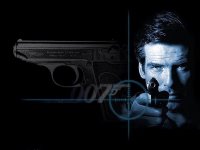
GoldenEye was an entertaining, and relatively well-plotted addition to the Bond series. There are hints of Bond’s darker side, and some troubling spots of Moore-like humour, which are thankfully kept under control. Bond is updated for the 90’s, but still retains the core characteristics that make him interesting. The next Brosnan Bond, Tomorrow Never Dies, was an entertaining addition to the series, but was unfortunately weaker in plot. Brosnan has some effective moments, but is not given enough to play. In the last third of the movie, the plot basically stops advancing, and we are left with wall-to-wall action. Slick and entertaining, with a great performance by Michelle Yeoh, Tomorrow Never Dies is not up to the standards of the classic Bonds. But three’s the charm, it seems, with the Bond series actors, as Brosnan’s third 007 outing, The World is Not Enough, was his best to date.
Directed by renowned documentary and dramatic director Michael Apted, The World is Not Enough reemphasized drama and performance, while still delivering on suspense, derring-do, and action. The plot includes Bond falling dangerously in love with Elektra King (Sophie Marceau), who may not be what she seems. Events in Bond’s past (especially On Her Majesty’s Secret Service) echo menacingly here, and Brosnan delivers a subtle, nuanced performance that, together with the interesting script and some great action sequences, elevates The World is Not Enough into the upper echelons of the 007 film series.
Unfortunately, Die Another Day, the next Bond film and the 20th 007 movie, hovered almost perfectly between the upper and lower ranks of the series. The first half is done in the style of the classic Connery Bonds, while the second half is essentially a latter Connery/Moore-era action extravaganza updated with MTV-style film techniques. As a result, after a riveting first half, the second half slides slowly into a dull assault on the senses, with a lackluster and seemingly endless climax on a burning plane. What saves the film, though, is Brosnan’s commanding performance, which centres the movie even in its sillier passages. Pulling in over $160 million at the U.S. box office alone and heaps more around the rest of the world, Die Another Day is one of the most successful 007 adventures ever. Clearly, the Bond films still entertain a mass audience, but EON Productions, the creators of the Bond film series, have recently looked for new directions.
James Bond Will Return
In a morass of political intrigue spun instantaneously and often inaccurately through the veins of the Internet, Pierce Brosnan was let go from the role, and a lengthy search for a new 007 ensued. Internet rumours popped up like fungus through soil, but an official announcement didn’t happen until November 2005, and acclaimed English actor Daniel Craig was proclaimed the new James Bond in Casino Royale, an adaptation of the very first Fleming Bond novel.
Craig is a fascinating choice. Little known by mass audiences, he is a respected actor in mostly dramatic films (Road to Perdition; Enduring Love; Layer Cake; Munich). His chiseled looks are handsome, but not in an airbrushed, GQ kind of way. He conveys a certain toughness and cynicism. In short, he appears to be perfect if the producers wish to return to Ian Fleming basics.
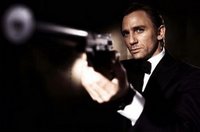
Which they at least say they do. EON and the director of Casino Royale, Martin Campbell (who also shepherded new 007 Brosnan to the screen in GoldenEye) have stated that the film will feature an early mission of the secret agent and that 007’s character will be forged throughout the dramatic arc of the story. Certainly, Casino Royale is one of the darkest and most cynical of the Bond novels, ending with an unforgettable last line (“The bitch is dead now.”). Ripe with dramatic potential, the novel is nevertheless problematic for film adaptation. There is little action in the story, a sadistic torture scene that gives me the willies, and the thriller story arc ends about two-thirds of the way through the book. It appears that the writers of the film adaptation will keep the book’s plotline largely intact, though updated, for the last third of the movie, and the first two-thirds will be new material. A more faithful adaptation of Ian Fleming’s immortal secret agent is certainly tantalizing, at least to die-hard fans. We will have to see; Casino Royale will be released in November 2006.
Whatever happens, “James Bond will return.”
